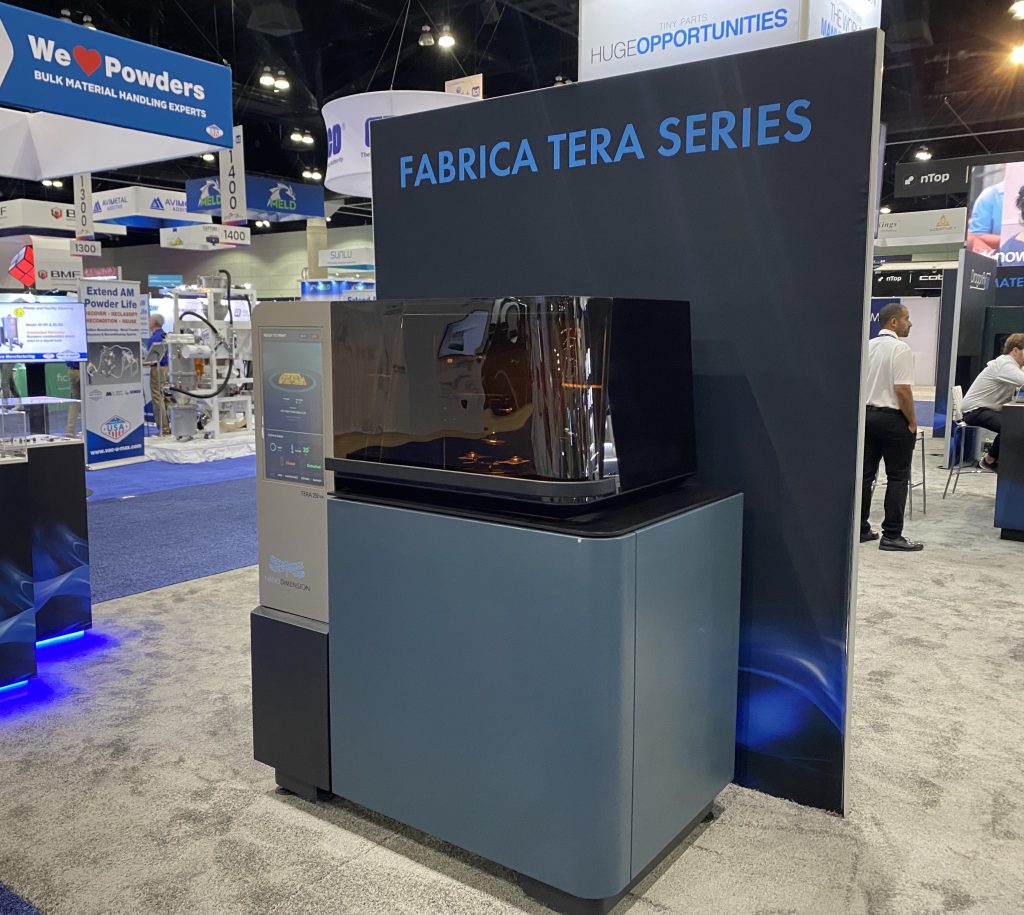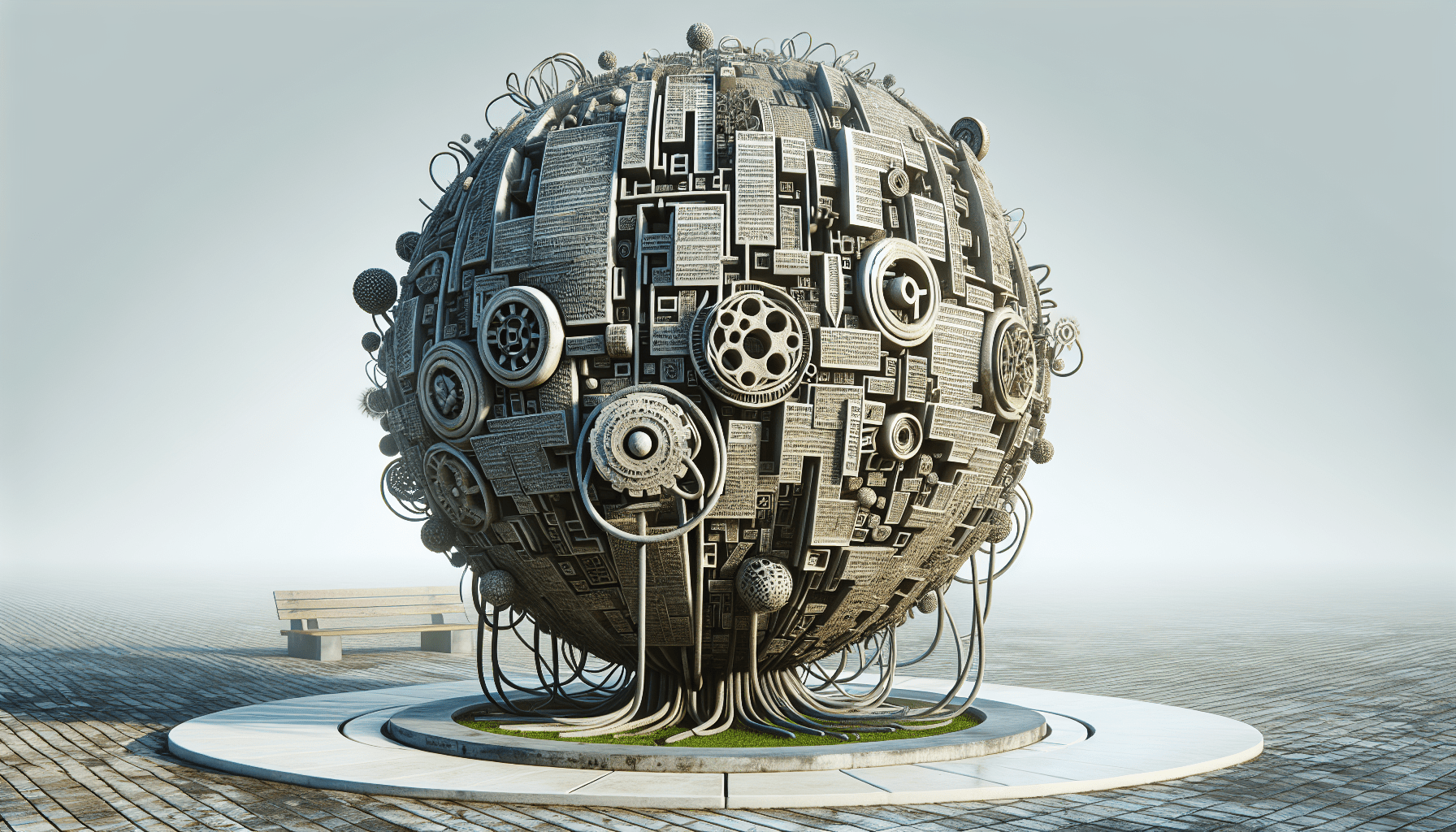Official Creality Ender 3 3D Printer Fully Open Source with Resume Printing Function DIY Printers Build Volulme 8.66x8.66x9.84 inch
$179.00 (as of May 29, 2025 10:56 GMT +00:00 - More infoProduct prices and availability are accurate as of the date/time indicated and are subject to change. Any price and availability information displayed on [relevant Amazon Site(s), as applicable] at the time of purchase will apply to the purchase of this product.)Have you ever wondered how technological advancements are shaping the future of space exploration? One of the stellar examples lies in the additive manufacturing realm, where SAB Aerospace is breaking new ground. In this detailed guide, you will learn about their latest achievement: 3D printing a complex rocket nozzle using Direct Energy Deposition (DED) technology.
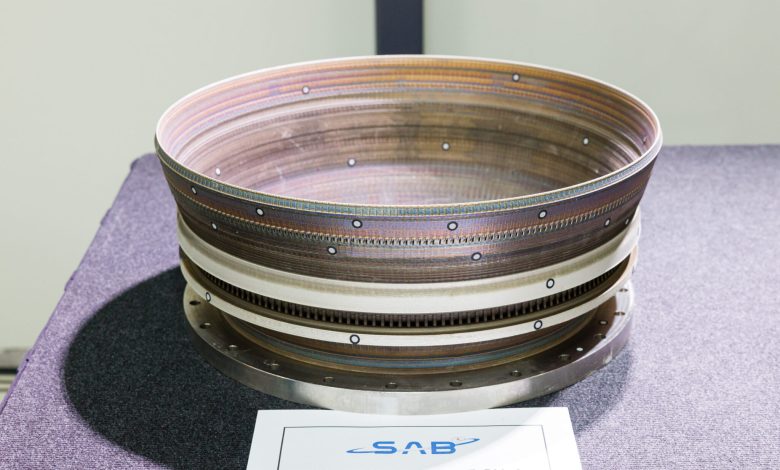
$30 off $400+ Anycubic Products with code AC30OFF
The Revolution in Aerospace Manufacturing
Top-notch precision and innovation are essential in the aerospace industry. Traditional manufacturing techniques are often cumbersome and limited in complexity, making the formulation of intricate components a challenging task. Yet, SAB Aerospace has turned a new page by adopting DED technology, propelling the industry into uncharted territories.
What is DED Technology?
DED, or Direct Energy Deposition, is an additive manufacturing process that uses focused thermal energy to fuse materials as they are deposited. Unlike traditional manufacturing techniques that remove material to create a part, DED builds components layer by layer. This not only saves material but also allows unparalleled freedom in designing complex geometries.
Key Features of DED Technology
DED technology stands out due to its unique features:
- Layer-by-layer construction: Creates complex shapes that would be impossible with conventional methods.
- Material efficiency: Significantly reduces waste.
- Versatility: Capable of using a wide range of materials including metals and polymers.
- Precision: Delivers high-accuracy parts suitable for critical applications.
SAB Aerospace: Crafting the Future of Space
SAB Aerospace’s simulative motto, “Crafting the Future of Space One Layer at a Time,” aptly reflects their commitment to innovation. By utilizing DED technology from Prima Additive, the firm has managed to produce one of the largest and most detailed rocket nozzles to date. The Prima Additive Laserdyne 795XL metal 3D printer, with a build volume surpassing one cubic meter, enables SAB Aerospace to create intricate, large-scale components at remarkable speeds.
Benefits of Using the Laserdyne 795XL
- Scalability: Can handle large components, essential for aerospace applications.
- Efficiency: Reduces manufacturing time significantly.
- Precision: Ensures that every minute detail of the component is perfectly executed.
- Custom Specifications: Allows the creation of parts tailored to unique needs.
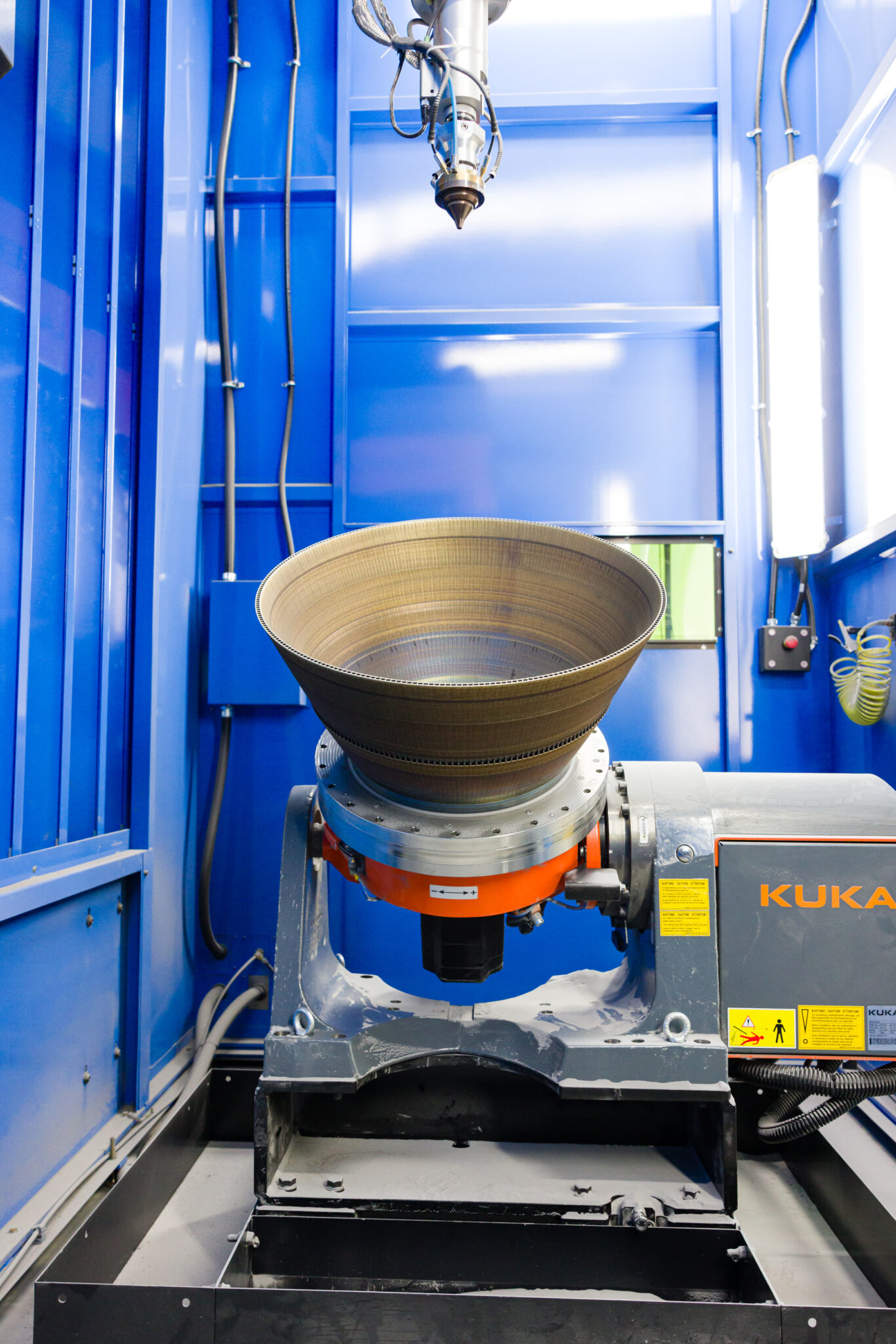
Buy Photon Mono M5 Get Free 1KG Resin
Inconel: The Superalloy of Choice
In order to develop the metal DED 3D printed rocket engine nozzle, SAB Aerospace teamed up with AVIO and opted for Inconel, a nickel-based superalloy. Why Inconel, you ask? Well, this material is a game-changer in aerospace applications due to its unique properties.
Properties of Inconel
High Strength
Inconel is renowned for its incredible strength, which remains consistent even at elevated temperatures. This property makes it indispensable in applications that are subjected to extreme conditions, such as space missions.
Excellent Thermal Conductivity
It’s not just about strength. Inconel also boasts superior thermal conductivity. This ensures that the heat generated during rocket propulsion is efficiently dissipated, reducing the likelihood of overheating and subsequent damage.
Superior Creep Resistance
Creep resistance is another crucial property for materials used in high-stress environments. Inconel maintains its form and mechanical properties even under prolonged exposure to high temperatures and pressures, making it ideal for rocket nozzles.
Corrosion Resistance
Space is a harsh environment that demands materials capable of resisting various levels of temperature and pressure. Inconel’s corrosion resistance across different temperatures makes it an excellent choice for fabricating components like rocket nozzles.
Temperature Tolerance
- Up to 40% Higher: Inconel can endure temperatures up to 40% higher than traditional alloys, which is essential for enhancing the performance and reusability of components.
- Water Temperature Resistance: Inconel also exhibits high pitting resistance in water temperatures ranging from 500° to 600°F (260–316°C).
Optimized Design for High-Performance Engines
In a mission to streamline the design and manufacturing process, SAB Aerospace has incorporated small internal channels within the nozzle. These channels are pivotal in maintaining the nozzle’s temperature, preventing it from melting under intense operational conditions. Unlike traditional manufacturing methods that require joining thousands of parts, SAB Aerospace’s nozzle is constructed as a single piece. This not only reduces the number of bonds but also slashes manufacturing time significantly.
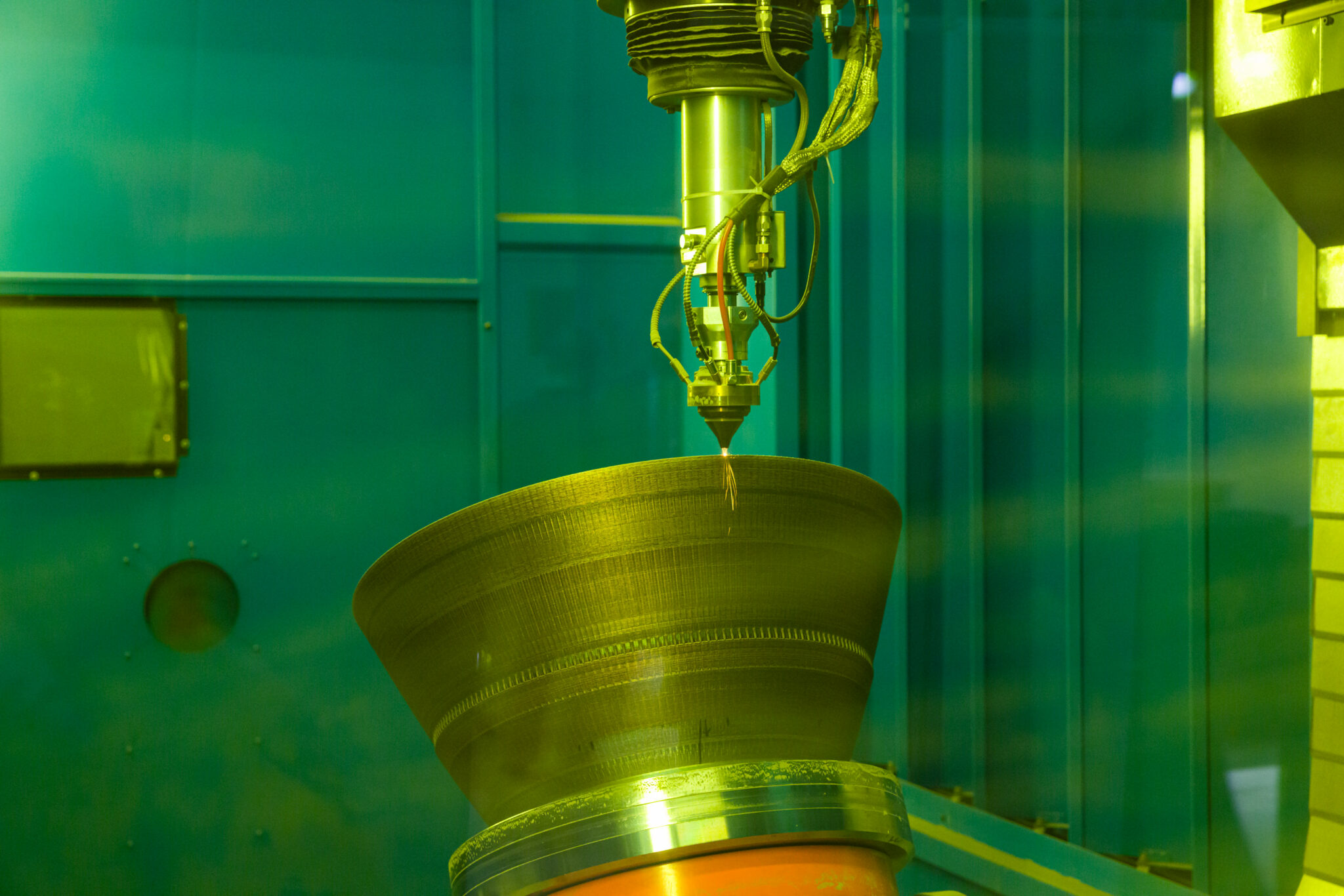
Advantages of SAB Aerospace’s Approach
Reduced Manufacturing Time
One of the biggest challenges faced in traditional manufacturing is time. Joining thousands of individual parts can be time-consuming. SAB Aerospace’s single-piece construction drastically cuts down on the time needed to produce a complete nozzle.
Cost-Effectiveness
OOTB: The use of DED technology and Inconel material means that components can be produced more quickly and cost-effectively than before. The efficiency in the production process translates to lower costs, which is critical for budget-sensitive aerospace projects.
Improved Performance
By optimizing material properties and the manufacturing process, SAB Aerospace can now produce lightweight, efficient nozzles that outperform their conventionally made counterparts. This is particularly important for deep space missions where maximizing payload capacities is crucial.
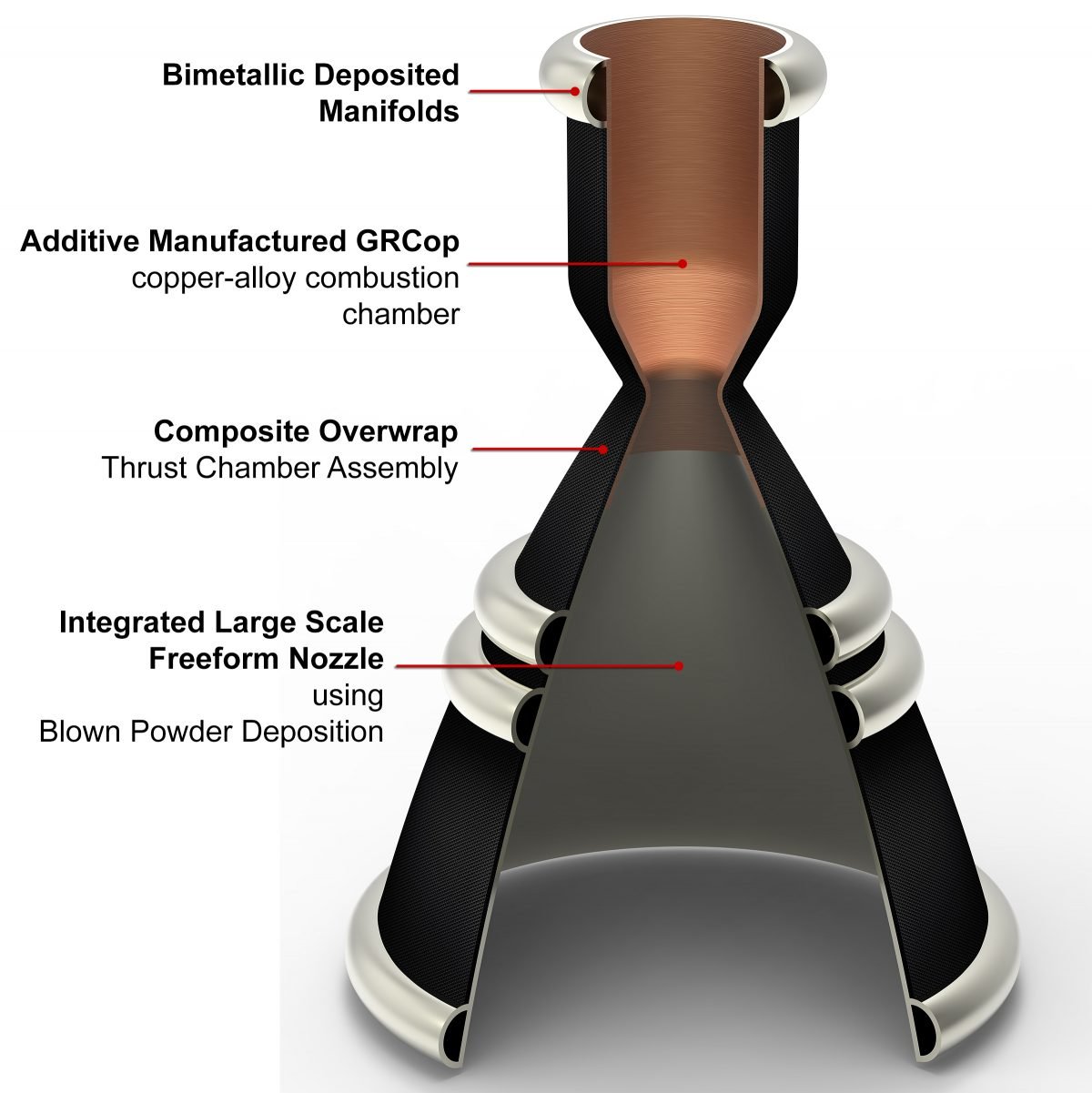
Future Implications
The successful implementation of DED technology and Inconel superalloys in creating rocket nozzles opens up exciting possibilities. It not only sets a benchmark in the aerospace industry but also paves the way for other applications where high precision, strength, and thermal conductivity are paramount.
Potential Broader Applications
Other Aerospace Components
The technology and materials used in creating nozzles can be extended to other aerospace components such as engine parts, structural elements, and more.
Cross-Industry Influence
While aerospace may be the primary beneficiary, the successful use of DED technology and Inconel can impact other sectors like automotive, medical implants, and consumer products.
Pioneering Innovation
By adopting these state-of-the-art technologies, SAB Aerospace aims to lead the industry in crafting solutions that exceed the demands of future space exploration. This forward-thinking approach not only impacts current projects but also sets a precedent for future innovations.
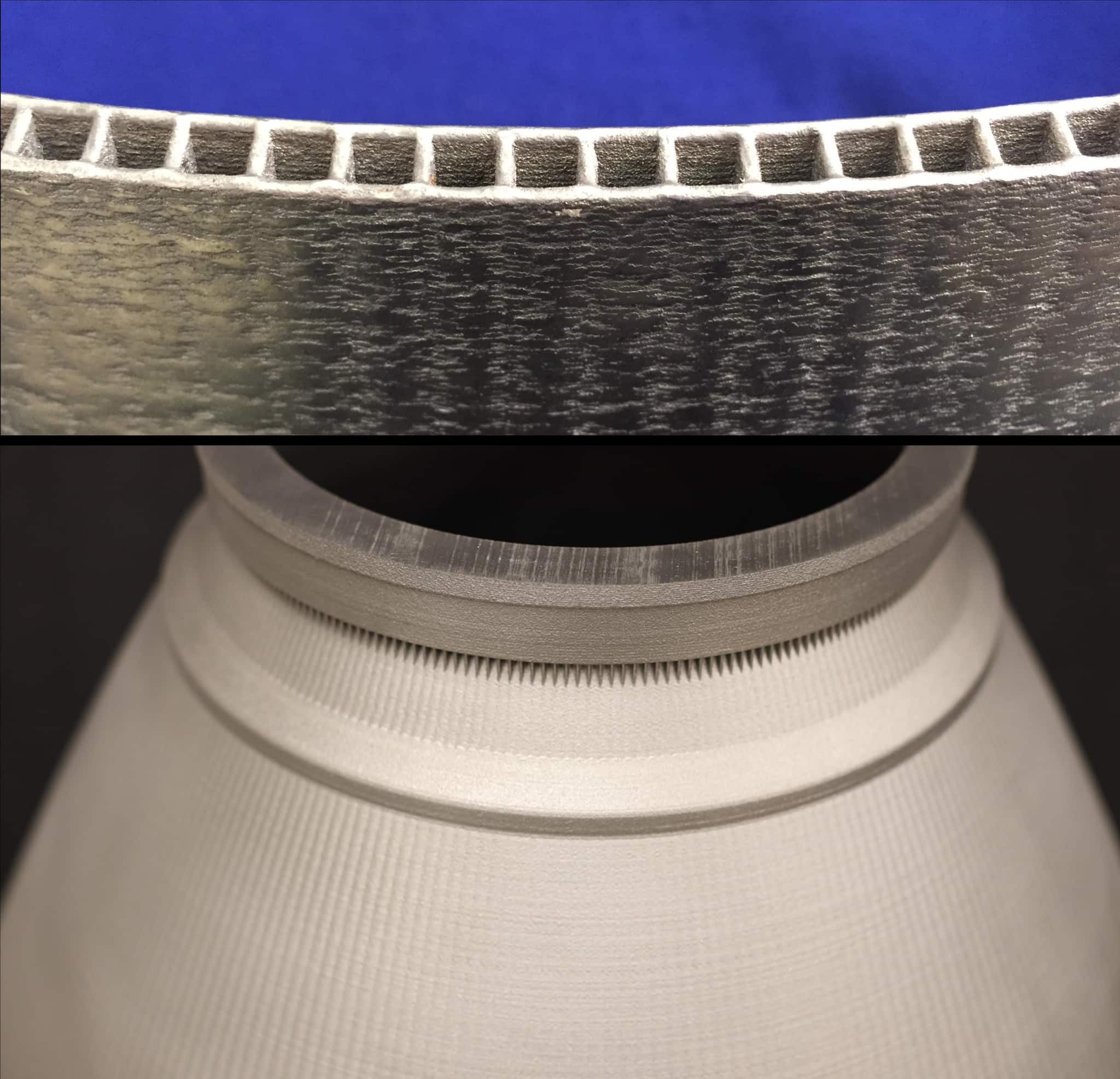
Tables and Comparisons
To help you better understand the differences and advantages of DED technology along with Inconel material, here’s a quick comparison.
| Feature | Conventional Manufacturing | DED Technology with Inconel |
|---|---|---|
| Material Usage | High waste | Efficient and minimal waste |
| Complexity | Limited | Virtually unlimited |
| Time | Time-consuming | Significantly reduced |
| Cost | High | Lower due to efficiency |
| Precision | Variable | High precision |
| Part Integration | Multiple parts joined | Single piece construction |
The above table summarizes the key differences, highlighting why SAB Aerospace’s approach is groundbreaking.
Summary
In a nutshell, SAB Aerospace’s use of Direct Energy Deposition technology and Inconel superalloy material to produce complex and efficient rocket nozzles marks a significant milestone. By leveraging these advanced technologies, the company has enhanced the design, manufacturing, and performance of aerospace components, setting new standards for future space missions. The implications reach far beyond aerospace and promise to influence various other industries that demand high-precision and high-strength components.
As technology continues to evolve, so will the methods and materials used in manufacturing. SAB Aerospace’s DED technology is a glimpse into a future where complex components can be made faster, cheaper, and better than ever before. This not only benefits the burgeoning space exploration industry but also ignites advancements in other fields, making our world a better, more innovative place.
So, next time you look up at the night sky, know that the marvels of technology and engineering, exemplified by SAB Aerospace’s groundbreaking work, are helping humanity reach for the stars.
$30 off $400+ Anycubic Products with code AC30OFF







